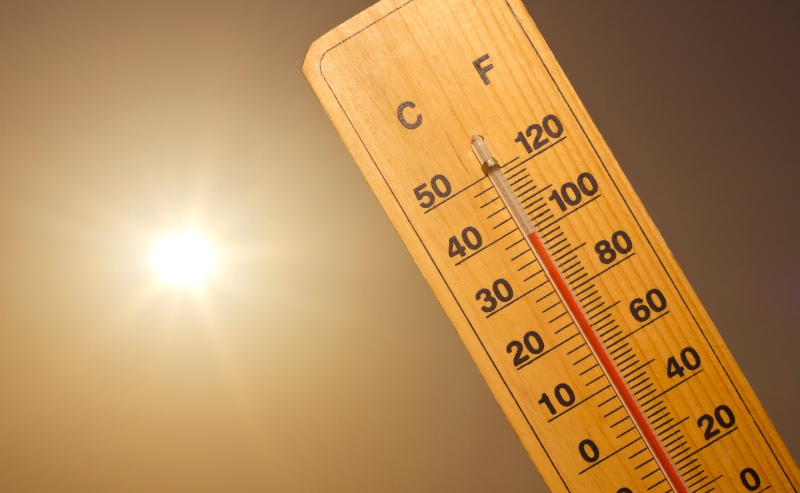Much of the country is contending with an extraordinarily long bout of extreme heat. Daytime temperatures are well into the 90s, heat indices are soaring to 100-110+ degrees, and humidity levels are almost unbearable. What’s worse? There’s little to no relief in sight, which could spell serious trouble to millions at home, at work, and everywhere in between.
Extreme heat isn’t just uncomfortable. It is a serious risk to public safety and business continuity, and it’s becoming increasingly common given the effects of climate change. Consider the following:
- The average daily temperature worldwide is at a record high of 62.96 degrees Fahrenheit.
- Research suggests the planet just experienced its warmest June ever recorded.
- In early July, over 55 million people were under some heat-related advisory.
- The recent Fourth of July holiday was the hottest ever recorded.
- Extreme heat can significantly impact business productivity and efficiency as employees can easily lose focus, concentration, and decision-making abilities.
- The U.S. Department of Labor’s Occupational Safety and Health Administration initiated new measures to protect worker better in hot environments and reduce the dangers of exposure to ambient heat in 2021.
- The Centers for Disease Control and Prevention (CDC) estimates there are over 67,500 emergency department visits due to heat-related illness each year and around 700 heat-related deaths. (These numbers are up sharply given the present frequency and severity of extreme heat events.)
Public Safety, Health Concerns
Heat poses several risks to personal health, particularly for children, the elderly, and those with certain medical conditions (e.g., heart and respiratory diseases). Even healthy people working or playing outdoors may experience heat strokes, heat exhaustion, or death. In fact, according to the CDC, many cities across the U.S., including St. Louis, Philadelphia, Chicago, and Cincinnati, have seen large increases in death rates during recent heat waves.
The latest city to join the ranks is El Paso, Texas. There, temperatures have exceeded 100 degrees for well over 20 consecutive days, and 13 people recently succumbed to heat-related illnesses. The scorching heat continues to plague the city and surrounding areas, and excessive heat warnings remain in effect.
Aside from direct health risks, extreme heat can exacerbate drought conditions, adversely affecting agriculture and local water supplies and increasing wildfire risk. It can also lead to power outages, leaving people without much-needed air conditioning, communications, or, worse, the use of life-saving medical equipment.
Business Continuity
When temperatures rise, organizations often find they cannot maintain business as usual. Employees may feel unwell and miss work, affecting productivity. HVAC systems may not adequately cool offices, creating uncomfortable, if not intolerable, working conditions. Transportation may slow down, resulting in supply chain interruptions. Blackouts or brownouts from overloaded electric grids may hinder or halt the delivery of goods and essential services. The list goes on.
Fortunately, public- and private-sector organizations nationwide have long dealt with the effects of Mother Nature. They have prepared for, responded to, mitigated against, and recovered from all types of natural disasters, including hurricanes, floods, and wildfires, and they have learned from them. These lessons are now being incorporated into their efforts to withstand today’s unrelenting stretches of extreme heat.
At BOLDplanning, a division of Agility, we know that for some, this may involve activating their continuity of operations (COOP) plan; for others, it may prompt a plan review or exercise. Either way, there will be an opportunity to make additional improvements before things heat up next year. “Extreme summer heat is increasing in the U.S.,” says the CDC, “and climate projections indicate that extreme heat events will be more frequent and intense in coming decades.”






